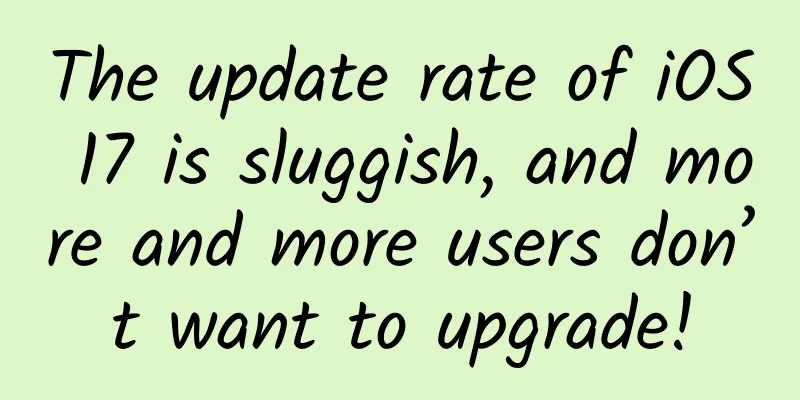The update rate of iOS 17 is sluggish, and more and more users don’t want to upgrade!

|
iOS 17 has been released for more than half a month, but users are not very eager to update. According to statistics as of October 6, the installation rate of iOS 17 was only about 23% 18 days after its release. In comparison, the installation rate of iOS 16 reached 29% 18 days after its release. Specific data shows that 12.13% of users chose iOS 17.0.2, 6.84% used iOS 17.0.3, and only 2% of users insisted on updating to iOS 17. As for the iOS 16 series, the combined share of users of iOS 16.6.1 and 16.7 is about 45%. User feedback shows that there is not much desire to upgrade to iOS 17, mainly because there is less update content, and upgrading old models may cause problems such as lag, and the heating problem of iPhone 15 Pro has not aroused users' enthusiasm for updating. In fact, Apple has always been troubled by the issue of iOS update rate. Since the release of iOS 12, the enthusiasm of Apple fans to update the major version of the system has gradually decreased, which has put Apple under great pressure. At that time, within two and a half months of the release, 70% of eligible iPhone phones completed the system update. |
<<: Android event distribution mechanism
>>: Why does the Android system use Binder as the IPC mechanism?
Recommend
All the bamboo shoots on the mountain have been taken! Are spring bamboo shoots really this fresh?
Audit expert: Shi Jun Doctor of Botany, well-know...
There are only a few days left! Have you eaten this year's spring vegetables?
Author: Fluent After the Waking of Insects, peach...
I really don’t recommend you to use the internet-famous “Copenhagen Weight Loss Method”!
For those who want to lose weight, as long as the...
What kind of copywriting can make users eager to click the "Buy" button?
Compared with the "heart", "tone&q...
Shanghai, why does we need Lingang?
Looking down on Shanghai from the sky, people can...
A woman forgot to turn off the electric heater and burned down two floors! Remember the "three cleanings and three closings" for home fire prevention
recently A woman in Changsha forgot to turn off t...
NetEase Cloud Music Competitive Product Analysis Report
When it comes to music software, many people thin...
The latest application market promotion strategy in 2015
1. Overall Logic There is only one logic in runni...
The host scored the first goal! Hisense Fresh Air Conditioner builds industry IP on the world stage
At 21:00 on November 25th, Beijing time, the matc...
Kuaishou advertising placement and advantages!
After placing Kuaishou ads, many advertisers will...
The most noteworthy tips on using Apple ID password
What is an Apple ID? You can use it to change you...
Shocking! Eating too much high-protein food can cause such serious harm! After reading this, do you still dare to eat like this?
Compiled by: Gong Zixin High-protein diet is a po...
How to choose a promotion channel that suits you based on the characteristics of short video channels?
There are new ideas every year, but this year the...









